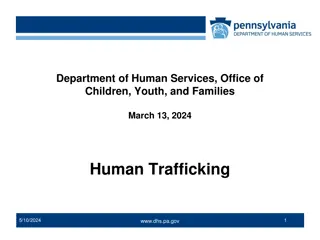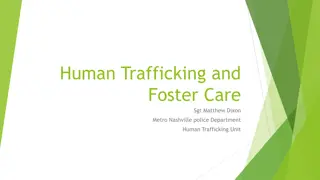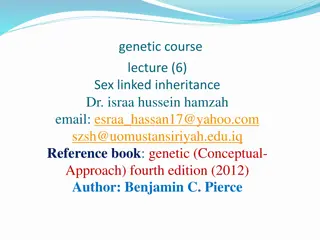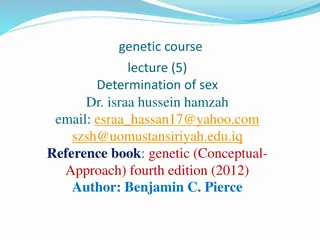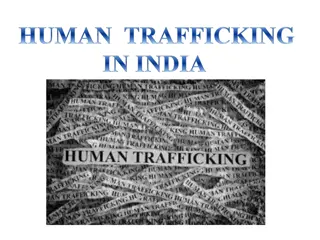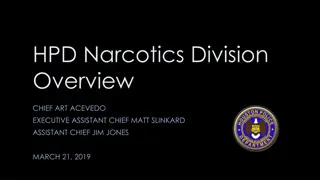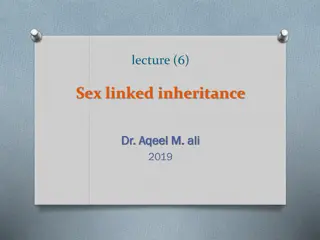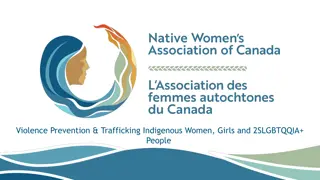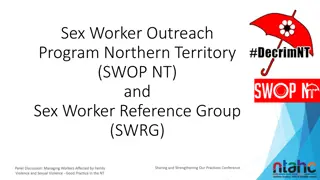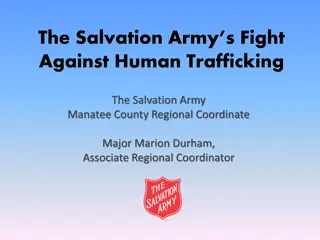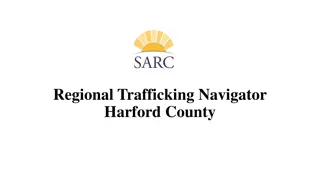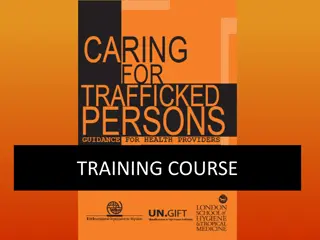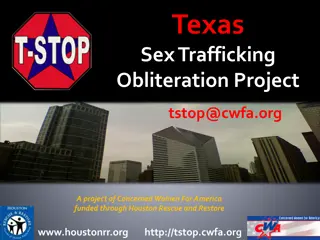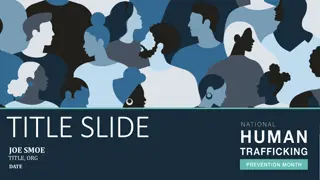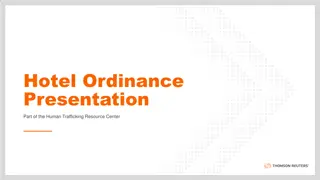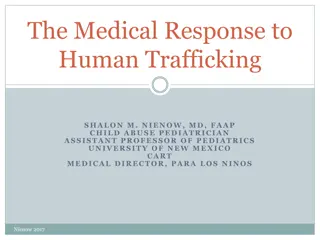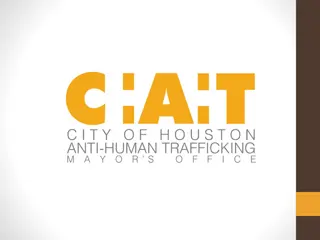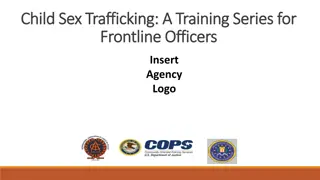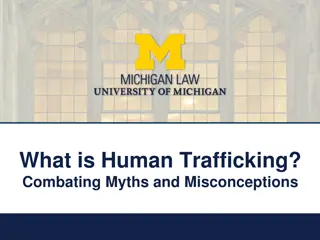
The Relationship Between Queerness, Homelessness, and Trafficking
Explore the intersection of queerness, homelessness, and trafficking with a focus on the impact of being LGBTQ+ on vulnerability to trafficking and homelessness, as well as the lack of support faced by queer individuals. Delve into research findings and statistics to grasp the complexities of these interconnected issues.
Download Presentation

Please find below an Image/Link to download the presentation.
The content on the website is provided AS IS for your information and personal use only. It may not be sold, licensed, or shared on other websites without obtaining consent from the author. If you encounter any issues during the download, it is possible that the publisher has removed the file from their server.
You are allowed to download the files provided on this website for personal or commercial use, subject to the condition that they are used lawfully. All files are the property of their respective owners.
The content on the website is provided AS IS for your information and personal use only. It may not be sold, licensed, or shared on other websites without obtaining consent from the author.
E N D
Presentation Transcript
The Intersection of Homelessness, Trafficking, and Queerness Beanie Lowery
Guiding questions: What is the relationship between queerness/being LGBTQ+ and trafficking? How does being homeless play into that? Does queerness impact the likelihood of being trafficked? Why? Are queer people more likely to be homeless? Does being homeless lend itself to being trafficked? What does the intersection of these factors look like?
What is queerness in this context? Queerness is an umbrella term for anyone who might fall into any of the LGBTQIA+ categories. Because different sources choose to use different abbreviations and acronym lengths, I have chosen to simply use the term queer as a way to signify I am talking about the LGBTQIA+ community as a whole.
Using the UNE Library website to ensure I had access to the documents I wanted to look at. Searching terms such as: LGBT* + trafficking LGBT* + human trafficking LGBT* + trafficking + youth Looking up the publisher, finding descriptions of review/publishing process. Following the references cited in other articles to find more data and examples. Search methods
Homelessness and Lack of Support According to the 2015 United States Trans Survey, an online survey that is self-enrolled and reported, 45% of trans people who reported homelessness also reported a lack of familial acceptance and support, alongside 27% of those who reported having support from families (James, et al. 2016). 8% of respondents were kicked out, 10% ran away from their homes (James, et al. 2016). In a UCLA Williams Institute School of Law study, 16.9% of respondents of any gender orientation, but belonging to a sexual minority, experienced homelessness, compared to 6.2% of the general, straight population (Wilson, et al. 2020).
Graph is taken directly from the Williams Institute study, and shows the comparison of homelessness in sexual minorities compared to the general population. The percentage for the general population comes from a peer- reviewed journal titled LGBT Health. One of the writers (Bianca D. W. Wilson) overlaps for both studies.
68% Of represented youth (17-25) were trafficked, or engaged in survival sex or commerical sex while homeless, according to a study conducted by Loyola University (Murphy, 2016).
But the numbers vary widely. In a survey conducted across 270 people averaging 20 years old across Philadelphia, Phoenix, and Washington D.C., only 17% of them had experienced being sex trafficked (Greeson 2019). Because homeless people are hard to survey due to often not having a mailing list, and many people being uncertain about sharing their trafficking experience, the overlap is hard to make exact. Certain factors of homelessness lead to survival sex, and do make the homeless person far more likely to be trafficked simply due to the situation and vulnerability.
All 3 feed into each other. Queer people are more likely to be homeless, homeless people are more likely to be trafficked, and queer people are more likely to be trafficked. The issue is a highly intersectional and overlapping one, with many different cause and effect situations. The discrimination that queer people face as well as the prejudice and bias against homeless people may well also play supporting roles in perpetuating the trafficking of homeless queer people.
What do we do? Trans and Sexual Minority specific outreach programs geared towards homeless people Increased welfare programs for emancipated youth, homeless youth, and runaway youth Survivor-based trafficking outreach, creating spaces for survivors to come together and reach out to the communities Awareness around the rampant trans/homophobia in the country Allocated resources for queer and homeless youth, with people trained in trauma-informed care
Bibliography Boswell, K., Temples, H. S., & Wright, M. E. (2019). LGBT youth, sex trafficking, and the nurse practitioner's role. Journal of Pediatric Health Care, 33(5), 555-560. https://doi.org/10.1016/j.pedhc.2019.02.005 Boukli, Avi. (January 2019). Deconstructing the lesbian, gay, bisexual, transgender victim of sex trafficking: Harm, exceptionality and religion sexuality tensions. International Review of Victimology. https://advance-lexis- com.une.idm.oclc.org/api/document?collection=news&id=urn:contentItem:60MS-RCP1-JBMY-H165-00000- 00&context=1516831. Bounds, D., et al (2020). Adapting a family intervention to reduce risk factors for sexual exploitation. Child and Adolescent Psychiatry and Mental Health, 14, 1. http://dx.doi.org/10.1186/s13034-020-00314-w Cho, S. (2015). Modeling for Determinants of Human Trafficking: An Empirical Analysis. Social Inclusion, 3(1), 2-21. doi:https://doi.org/10.17645/si.v3i1.125 Greeson, J. K. P., et al. (2019). Prevalence and Correlates of Sex Trafficking among Homeless and Runaway Youths Presenting for Shelter Services. Social Work Research, 43(2), 91-100. 10.1093/swr/svz001 Hogan, K. A., & Roe-Sepowitz, D. (2020). LGBTQ+ homeless young adults and sex trafficking vulnerability. Journal of Human Trafficking, 10.1080/23322705.2020.1841985 James, S. E., et al. (2016). The Report of the 2015 U.S. Transgender Survey. Washington, DC: National Center for Transgender Equality
Bibliography Langer, M., et al. (2020). LGBTQIA+ youth and human trafficking. Medical perspectives on human trafficking in adolescents (pp. 179-196). Springer International Publishing. https://doi.org/10.1007/978-3-030-43367-3_11 Meyer, I. H., et al. (2020). An innovative approach to the design of a national probability sample of sexual minority adults. LGBT Health, 7(2), 101-108. Murphy, Laura T. (2017). Labor and Sex Trafficking Among Homeless Youth: A Ten-City Study. New Orleans, Louisiana: Loyola University New Orleans. https://oag.ca.gov/sites/all/files/agweb/pdfs/ht/murphy-labor-sex-trafficking- homeless-youth.pdf Murphy, L. T., Taylor, R., & Bolden, C. L. (2015). Trafficking and exploitative labor among homeless youth in New Orleans. Covenant House. Paul, Nat (2021). Letter on LGBTQ+ Vulnerability to Human Trafficking. In Trafficking in Persons (p. 44+). U.S. Department of State. https://link.gale.com/apps/doc/A669138900/AONE?u=bidd97564&sid=summon&xid=c491b799 Schwarz, C., & Britton, H. E. (2015). Queering the support for trafficked persons: LGBTQ communities and human trafficking in the heartland. Social Inclusion, 3(1), 63-75. 10.17645/si.v3i1.172 Wilson, B. D. M. et al. (2020). Homelessness among LGBT adults in the U.S. Los Angeles, CA: Williams Institute.

